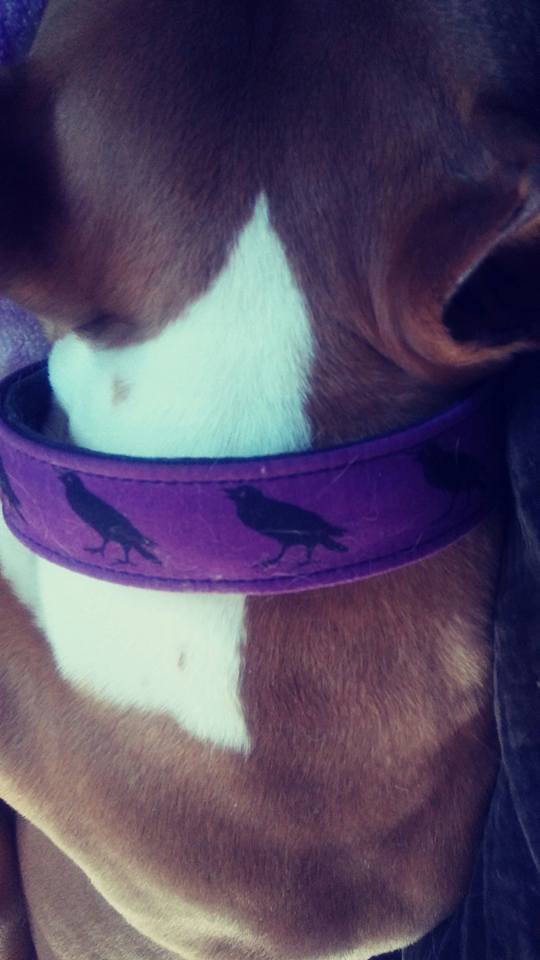Someone leaves a door open. A leash breaks. There’s a hole in the fence. Storm or firework noises cause panic and unpredictable behavior.
Pets get out, and it doesn’t mean their owners don’t love them; the truth is that all it takes is a momentary failure in a management system. Should this happen to you, there area few things you can do to increase your chances of a safe and happy return.

First, the preventative stuff:
- Make sure your pet is microchipped, and make sure that microchip is registered to your current address. There are numerous brands of microchips, and your vet can implant it for you quickly and inexpensively. A pet microchip is not a GPS system – it doesn’t tell you Fluffy is turning right on Main Street. What it does is store your contact information in the event the pet is found by someone else and taken to a facility – like a vet or animal shelter – that has a chip scanner. The scanner is waved over your pet’s body and pops up with a message of what company and number is on the chip. The agency then contacts the chipping company, and is given your info. It’s not a flawless system: chips can migrate in the body, so the scanner needs to be done carefully to avoid missing it. Additionally, not all scanners pick up all brands of chips. But far and away the most common issue is owners not updating their information, so the scan comes up with outdated or blank contacts.
- A sturdy collar with current tag provides your information to anyone who can get close to your pet – no fancy scanner needed. There are quite literally thousands of options for beautiful and strong custom collars and tags, so you can really go wild personalizing your pet, or you can go simple and grab something cheap from the big box store. It doesn’t have to be expensive and exotic, it just has to be on your pet and have clear and current contact information for you. Having both collar id and a microchip may seem excessive, but remember you’ve already had that failure in management, you want as many ways as possible for someone to get your loved one back to you.
- This one might sound silly, but it’s important – take pictures of your pet. Obviously you’ll do this because they’re the cutest thing ever, right? But make sure you have current, clear photos of identifying characteristics and markings. They can help shelter employees compare your cat to the dozens of other grey tabbies they’re caring for, and they can be blown up to make helpful “Lost Dog” flyers to post around town. Plus, they’re the cutest thing ever, so win/win.
- Have a rough idea of how much they weigh. It doesn’t have to be exact to the ounce, but if a gallon of milk is eight pounds your cat probably doesn’t weigh thirty pounds. Try to have an estimate within ten pounds or so, so shelter staff can rule out the chihuahuas while you’re looking for your mastiff. Also make a mental note of any unusual markings, things that could help in verifying over the phone if the found animal is yours. Heart-shaped spots, smudges of color on the nose, a tip of white on the tail; things like this can help determine if a drive to see is necessary, or rule out false hope.

So now that you have a few ways to prepare for the hopefully-never-going-to-happen event of your pet going missing, what happens when they do?
You tell. Everyone.
- On all your social media pages, share a picture and description of your pet, as well as how to get in touch with you and at least one back up person if the pet is seen. Remove privacy settings so that others can share the post as well. Don’t forget that people cannot share posts that are directly to Facebook groups, so share a public post from your page so helpers can share at will.
- Print up color flyers with two or three of those lovely photos you’ve taken, multiple ways to get in touch with you, and what people should do if your love is spotted – it’s okay to say “do not approach” in the case of a skittish animal, or to mention food allergies or medications needed. Post these in as many places as you can – but make a note of where those are, so that when your sweetheart is found, you can take them down (or be prepared for Mistaken Identity Found Pet calls until the signs are gone.)
- Post a large poster-sized flyer outside your own home. Someone who is able to scoop up your pet may go around the neighborhood to see if they can find owners, and this sign could shorten both their search and your heartache.
- Contact area vets – not just your own, but every one you can reach – and local pet friendly stores, including hardware stores or outdoor cafes as well as pet supply stores. A friend of mine recently had a dog leave the yard when workers left the gate open, and the pup strolled over to a nearby pet store and walked in like she was running some casual errands.
- Walk familiar routes you take with your dog calling their name. Walk around your property, and leave your pet’s bedding or clothing you’ve recently worn near shrubbery that might make a good hiding place. Your goal is to leave your scent, so that if your cat or dog is trying to find their way back to you but is disoriented, you’ve given them a bit of a road map. Repeat this daily, preferably in the early evening, and more frequently if it rains.
- Speak with local shelters and animal control. Let them know your pet is missing and ask their individual policies, which will vary by organization, for how to search their animals. Some may allow you to come in and look at each animal yourself, others may require new animals to be held in a private quarantine area, so your time may be better served by providing a photo and simply calling back as frequently as they will allow.
- Look into agencies that focus on locating missing pets. Organizations like Finding Knox, Pawboost, and Dogs Finding Dogs have an unfortunately large amount of experience in this area, and you can and should use that to your advantage. (These groups are all local to the Baltimore area, but there may be something similar near you if these don’t apply.)
Hopefully you’ll never need these tips. But if you don’t, the chances are high that someone you know will. Preparation and quick-thinking should go far in reuniting lost loved ones as quickly and safely as possible.

